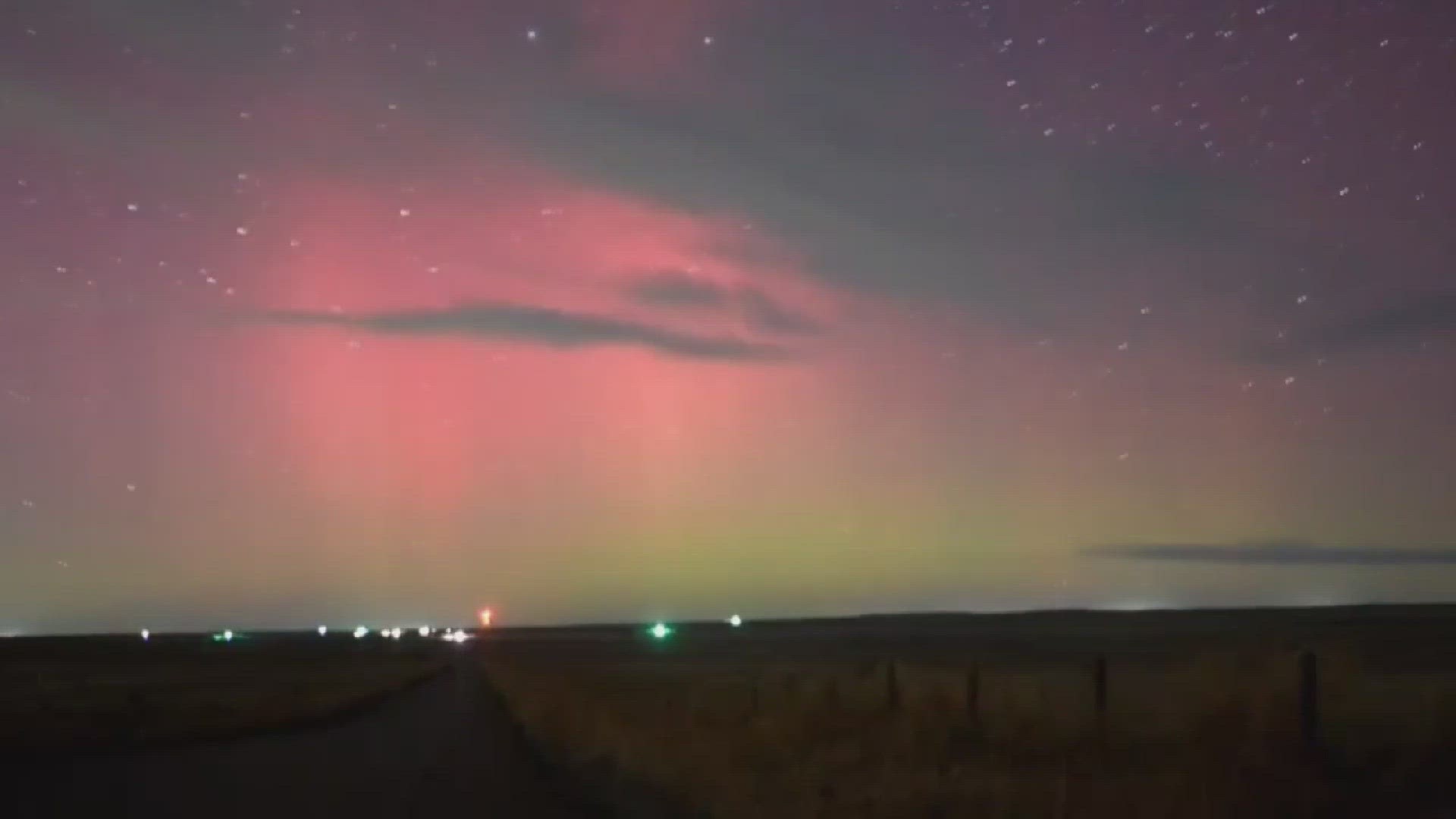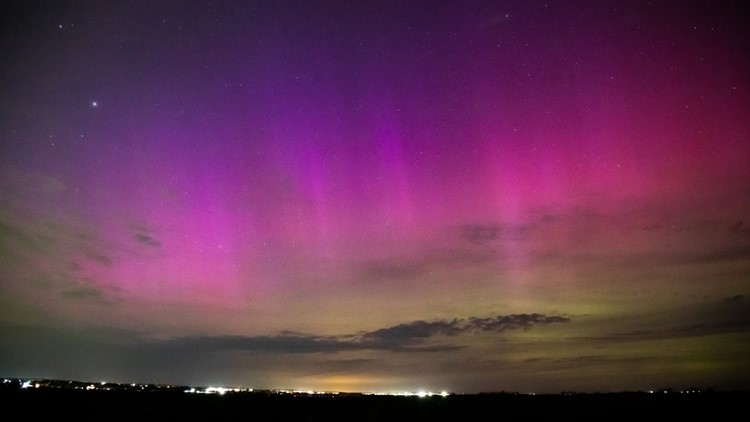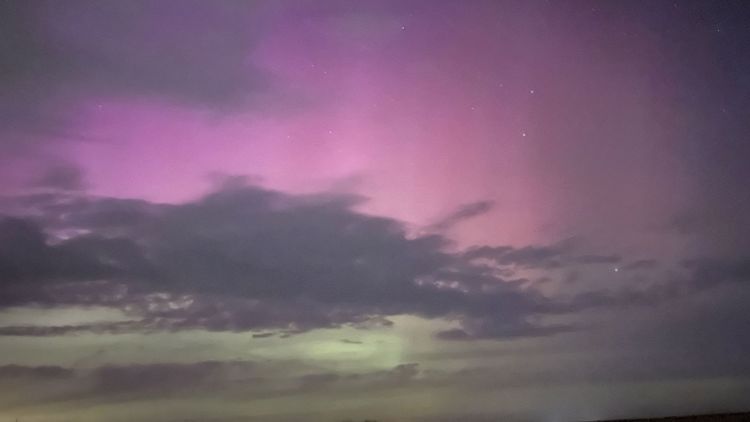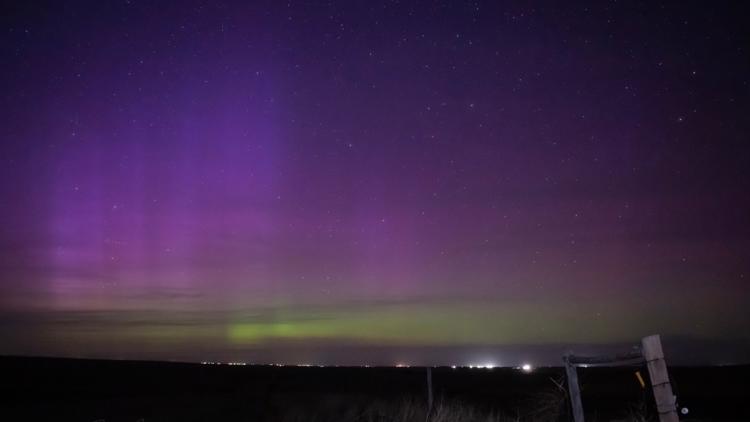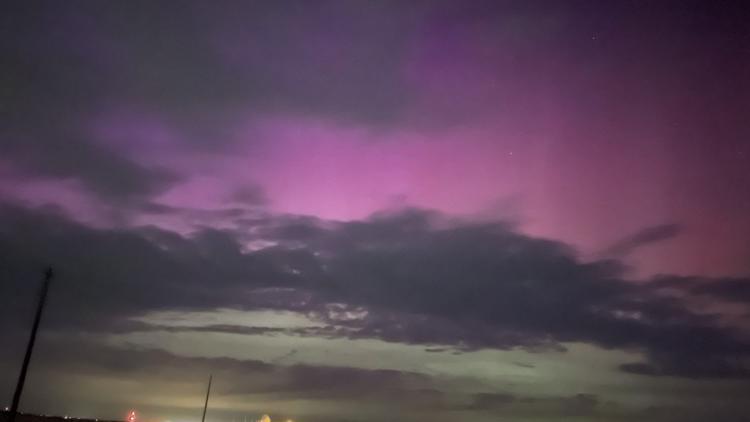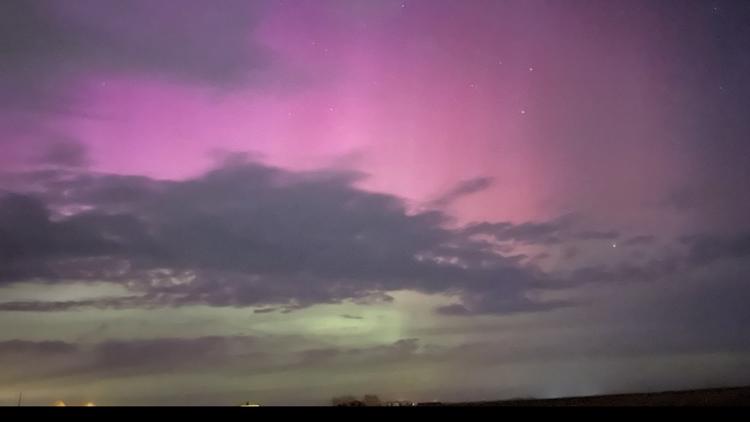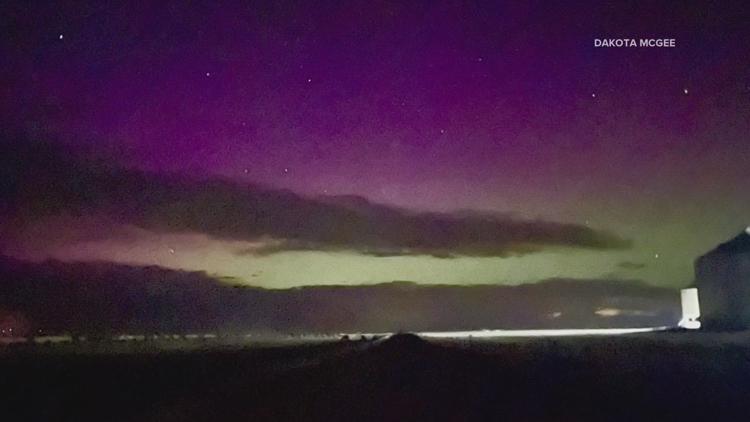BOULDER, Colo. — A powerful and long-lasting solar flare was observed on the sun Monday, and several waves of energy known as coronal mass ejections (CME) are forecast to hit the earth in the next few days.
Forecasters with the Space Weather Prediction Center (SWPC) in Boulder said a total of four CMEs are inbound.
The first three are somewhat small and slow-moving. The fourth CME is expected to catch and merge with the three in front of it, becoming something that solar scientists call a cannibal CME. The result could be one of the strongest solar storms of the year.
When that solar energy interacts with the earth's magnetic field, it could create one of the most dazzling displays of the northern lights since March. That event, which was classified as a G-4 magnetic storm, was captured by Colorado photographer Erin Moe from the Pawnee National Grasslands in Weld County.
Like hurricanes and tornadoes, solar forecasters rate geomagnetic storms on a scale of 1 to 5. A G-1 is a minor storm, and a G-5 is an extreme storm. The stronger the geomagnetic storm, the farther south the aurora reaches.
Some energy hit the earth on Tuesday night, making the aurora borealis visible as far south as Colorado. SWPC said Tuesday’s storm reached G-2 levels.
With G-2 and G-3 storms, the aurora borealis is visible from Colorado but only on the northern horizon. That’s because we are looking at the side of the aurora as it physically reaches as far south as southern Canada, or sometimes even stretching over the northern U.S.
G-4 storms can reach down to cover some of the northern states in the U.S., but we are still looking at it mostly on the northern horizon.
In the case of a rare G-5 storm, the northern lights can physically reach all the way to Colorado, which means we could possibly see the ribbon structure of the aurora directly overhead.
The last time the aurora reached as far south as Colorado was the last G-5 storm, which was in October 2003.
How to see the northern lights in Colorado
Find a clear view of the northern horizon as far away from any lights as possible. Don’t expect to see any dancing ribbons like you might see if you were closer to the north pole. Look for a faint glow of green or pink just above the ground in the distance.
Unfortunately, the weather doesn’t look too promising on Thursday or Friday morning, which is the when the most vibrant display will happen. There is a winter storm system just moving into Colorado which will bring at least partial cloud observations from Wednesday night into Thursday morning, and again on Thursday night into Friday morning.
The waning gibbous moon will also be working against our ability to see the aurora. The glare from the bright moonlight will show through if there are any open patches in the cloud cover.
SUGGESTED VIDEOS: Latest from 9NEWS

